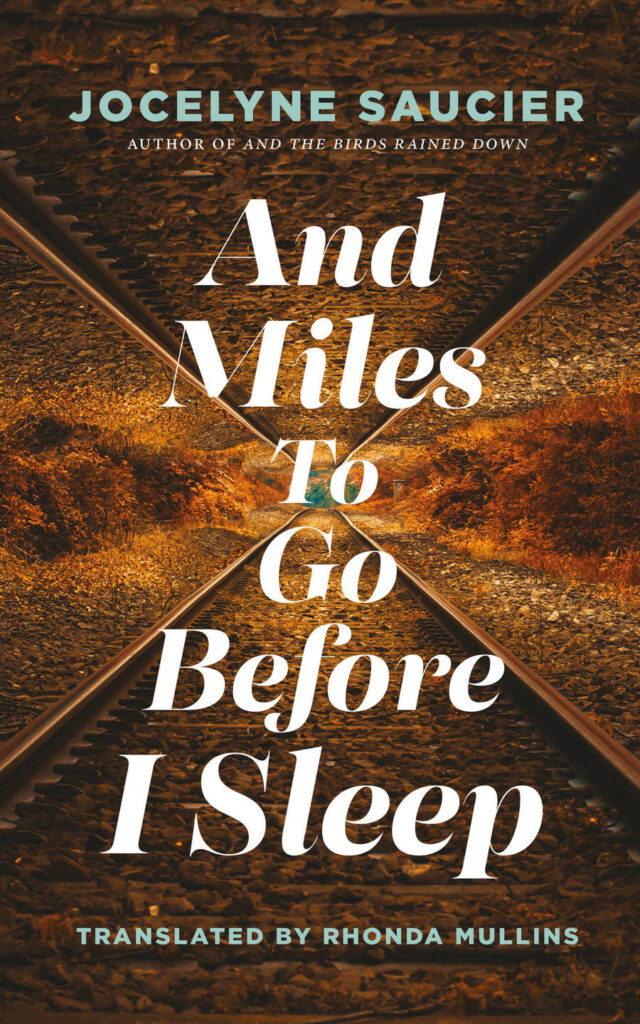
The school train. We have finally arrived. There was not just Gladys’s nostalgia; there was my own fascination. I was struck, utterly, by the school trains, a head-on collision with major damage, a fascination that kept me in a state of alertness around anything to do with them. To the point of sometimes forgetting about Gladys and getting lost down sideroads.
Gladys was born on a school train, and she lived on one for sixteen wonderful years, the daughter of William Campbell, a travelling teacher who taught her about all the possibility a day holds and the sun that always ends up shining. Gladys had a happy childhood, happier than any child in the world could dream of, a dedicated childhood, a childhood that had meaning and significance, a childhood like no other, and she returned to it every time she was in danger of foundering. To truly know Gladys, you have to know about her childhood, the years of pure happiness when she took in what she needed, not to be later swept away by Lisana’s dark waters. ‘When you have known happiness, it’s impossible to believe that it’s no longer possible.’
The school trains are no more. Few people know about their existence. What I know comes from the old-timers, former students I met along my own journey. I searched the internet, the libraries, municipal museums (almost every small town in Northern Ontario has one), and I didn’t find much, a few pictures and information riddled with holes. I visited the rail museums in Saint-Constant and Capreol to see a replica of an old school train. I read, cover to cover, The Bell and the Book by Andrew Donald Clement, a travelling teacher who put in twenty-seven years on the school trains. But the former students were the most useful. They told me piles of stories. I will try to record here only what is necessary for understanding Gladys and her journey. But I don’t make any promises, because my fascination tends to sprawl and could splash onto the pages.
So here it is.
From 1926 to 1967, seven school trains cut across Northern Ontario to bring the alphabet, mental math, and the capitals of Europe to children of the forest. Seven school cars, seven schools on wheels, as they were also called. Set up as classrooms (desks, a teacher’s lectern, blackboards, bookshelves, everything to accommodate twelve students and their teacher), the cars were basically mobile schools. A freight train would pull the car over a distance of around twenty kilometres, leave it on a siding, in the middle of the forest, from which emerged a group of children who for a few days would learn reading, writing, and arithmetic, a bit of history and geography, until another train came to pick up the car and take it twenty more kilometres, to where other children awaited it. The mobile school made five, six, or seven stops along a one- or two-hundred-kilometre line and returned a month later to the children at the first stop, who had waited all that time with homework and lessons. The stops corresponded to the tiny villages where trackmen maintained the track and kept trains supplied with water and coal (it was the era of steam locomotives). This was how education was dispensed, a few days at a time, to not only the children of the trackmen, but also to all those who lived in the surrounding forest, the children of prospectors, woodsmen, trappers, Indigenous people, and fire wardens. Wild little children of the forest, most of whom on their first day of school had never opened a book or uttered a word of English, being the sons and daughters of immigrants, Cree, or Ojibwe. Some of them did their ten years of schooling, some pursued their education elsewhere, becoming nurses or engineers, but all of them cherish the memory of that car that brought to them the wonders of a world to discover, both in books and in the train itself. It’s something they still talk about with awe: the linoleum on the floor, the varnished maple panelling, the curtains on the windows, the flush toilet, the battery-powered radio, the oil lamps – it all gleamed with opulence and novelty in the eyes of children of the forest.
The teacher had his quarters on the train. Three tiny rooms with the modern comforts of the times: a kitchen, a bathroom, and a central space that, depending on the hour, served as a sitting room, dining room, or bedroom. The little Campbell household was home to four children, a dog, a cat, and a skunk they had tamed and that then left them for no reason, as well as the many visitors that their extraordinary presence on the train attracted. Life was exhilarating, fascinating, thrilling, exciting, always in motion, a perpetual merry-go-round. The Campbell children grew up with the swaying of the train and the feeling that their parents were humanity’s benefactors. Gladys more than any of them because, as the eldest, she helped her father in the classroom with the little ones and her mother in the family home. Her mother who, in addition to her household tasks (which were no doubt many), helped women write letters or fill out a list for orders at Eaton’s or provided care for sick children.
The school train was much more than a school. It was where they offered evening classes for adults (reading, writing, counting, and Canadian democratic institutions for immigrants), medical care and vaccinations (a doctor came twice a year), bingo nights, radio evenings (particularly during the war). They welcomed hoboes for hot meals during the Great Depression, children in makeshift beds on blizzardy nights, and an entire small community on its own for Christmas. Gladys often talked about how much fun they had making decorations and trimming the tree with the children on the school train. Fun that would wane as the stops went by, to be completely depleted by the time they had to organize their own family Christmas in Chapleau. After each stop, she would say, laughing, they threw the tree and the decorations out the window and started over at the next stop.
Life on the school train was made up of these pleasures and these labours. Gladys maintained a strong predilection for the swaying of the train, time without end, the trees, lakes, and rivers that slowly streamed by, and the cool smell of resin that greeted her when she got off the train in one of the forest hamlets that stubbornly continued their uncertain existence, where she would find a child of the forest who had grown as old as she had.
__________________________________
Excerpted from And Miles to Go Before I Sleep by Jocelyne Saucier, trans. Rhonda Mullins. Excerpted with the permission of Coach House Books.


